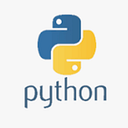10 Essential Data Cleaning Code Snippets in Python
Data cleaning is a critical step in any data science project. Ensuring your data is accurate, complete, and properly formatted is essential for meaningful analysis. In this article, we’ll explore ten essential data cleaning code snippets in Python with practical examples to help you whip your data into shape.
1. Introduction
The Importance of Data Cleaning
Data is rarely perfect. It often comes with missing values, inconsistencies, and inaccuracies. Data cleaning, also known as data preprocessing, is the process of identifying and rectifying these issues to ensure the data’s quality and reliability. Clean data is essential for accurate analysis and modeling.
2. Importing Libraries
Getting Started
Before diving into data cleaning, you need to import the necessary Python libraries, such as Pandas and NumPy. These libraries provide powerful tools for data manipulation.
# Importing Libraries
import pandas as pd
import numpy as np3. Loading Data
Reading Your Dataset
The first step in data cleaning is loading your dataset. You can use Pandas to read data from various sources, such as CSV, Excel, or databases.
# Loading Data
data = pd.read_csv('your_dataset.csv')4. Handling Missing Values
Dealing with NaNs
Missing values can disrupt your analysis. You can identify and handle them using Pandas.
# Handling Missing Values
data.isnull().sum() # Count missing values
data.dropna() # Remove rows with missing values
data.fillna(value) # Fill missing values with a specific value5. Dropping Duplicates
Eliminating Repetition
Duplicate rows can skew your analysis. You can remove them using Pandas.
# Dropping Duplicates
data.duplicated().sum() # Count duplicate rows
data.drop_duplicates() # Remove duplicate rows6. Correcting Data Types
Ensuring Proper Formats
Inconsistent data types can cause errors. You can convert data types using Pandas.
# Correcting Data Types
data['column_name'] = data['column_name'].astype(new_dtype)7. Renaming Columns
Clarity in Naming Conventions
Meaningful column names enhance clarity. You can rename columns using Pandas.
# Renaming Columns
data.rename(columns={'old_name': 'new_name'}, inplace=True)8. Dealing with Outliers
Identifying and Handling Extremes
Outliers can distort your analysis. You can detect and address outliers using statistical methods.
# Dealing with Outliers
Q1 = data['column_name'].quantile(0.25)
Q3 = data['column_name'].quantile(0.75)
IQR = Q3 - Q1
data = data[(data['column_name'] >= Q1 - 1.5 * IQR) & (data['column_name'] <= Q3 + 1.5 * IQR)]9. Text Cleaning
Preparing Text Data
Text data often requires cleaning, such as removing special characters and converting to lowercase.
# Text Cleaning
data['text_column'] = data['text_column'].str.replace('[^a-zA-Z\s]', '') # Remove special characters
data['text_column'] = data['text_column'].str.lower() # Convert to lowercase10. Date and Time Parsing
Extracting Useful Information
Date and time data can be challenging to work with. You can parse and extract information using Pandas.
# Date and Time Parsing
data['date_column'] = pd.to_datetime(data['date_column'])
data['year'] = data['date_column'].dt.year
data['month'] = data['date_column'].dt.month11. Conclusion
Clean Data, Informed Analysis
Data cleaning is a crucial step in any data science project. By mastering these ten data cleaning code snippets in Python, you’ll be well-equipped to prepare your data for analysis effectively. Clean data leads to more accurate insights, better models, and more informed decisions.
Data Science Journey
Thank you for your time and interest! 🚀
You can find even more content at Data Science Journey💫
